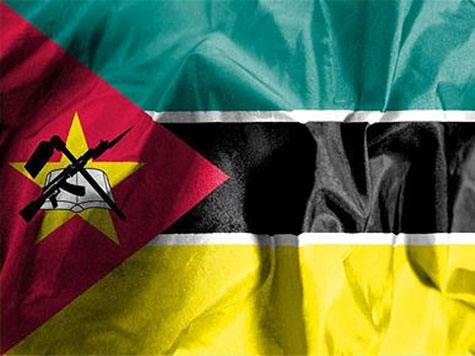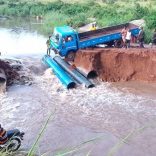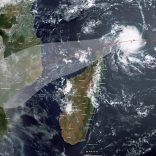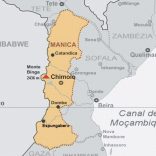Mozambique: Parliament elects Deputy Speakers
Mozambique: Government considering using gas reservoirs to sequester CO2

Image: Lusa
Mozambique is considering using reservoirs resulting from the extraction of liquefied natural gas (LNG) to capture carbon dioxide (CO2), as provided for by the National Maritime Spatial Planning Plan (POEM)
“Promote CO2 sequestration projects, using reservoirs resulting from LNG extraction, allowing operations to continue, with clear environmental benefits, for a few more decades,” reads the strategic axes and objectives of the POEM drafted in 2021 and approved by the Mozambican government at the end of 2024.
Carbon dioxide is the most common greenhouse gas, and its sequestration is intended to reduce its presence in the atmosphere and mitigate its effects on climate change.
A study by consultancy firm Deloitte concluded in 2024 that Mozambique’s LNG reserves – which currently have projects underway or under consideration by multinational oil companies such as TotalEnergies, ExxonMobil and Eni – represent potential revenues of US$100 billion (€96.2 billion), highlighting the country’s international importance in the energy transition.
“The country’s vast gas reserves could make Mozambique one of the world’s ten largest producers, responsible for 20% of Africa’s production by 2040,” states the report.
In this area, the POEM also plans to “ensure the legislative, administrative and governmental frameworks, and national receptiveness to hydrocarbon research and production activities”, in order to “overcome environmental opposition and possible conflicts of interest with other activities”.
The document also refers to the need to “reduce the impacts resulting from the implementation of industrial and urban infrastructures and research and production activities, in coastal areas and in interaction with other activities, particularly those of a local scope (fishing and tourism)”.
Among dozens of other measures provided for in the POEM is Mozambique’s ratification of the 2021 Convention on the Protection of the Underwater Cultural Heritage of the United Nations Educational, Scientific and Cultural Organization (UNESCO), “in order to help protect the more than 300 shipwrecks from various periods inventoried along the Mozambican [Indian Ocean] coast”.
The document also foresees “boosting maritime-tourism activities related to ‘wreck diving’ taking advantage” of this number of shipwrecks “and the numerous discoveries of important underwater archaeological remains around the Island of Mozambique”.
Mozambique’s maritime space covers an area of around 572,000 square kilometres (km2) encompassing “numerous mineral and ecological riches of great importance for increasing the country’s development capacity”, including 12,000 km2 of conservation areas currently “subject to threats that include overfishing, unregulated exploitation of natural resources, inappropriate tourism practices, pollution, extreme weather events (such as storms and cyclones) and urban and industrial development along the coast”.
The country has a coastline of 2,700 kilometres, “including extensive sandy beaches with dunes and coastal lagoons, marshes and mangroves, estuaries and coral reefs”, considered, according to the POEM, “a significant natural resource in itself, even perhaps the country’s most valuable natural resource”.












Leave a Reply
Be the First to Comment!
You must be logged in to post a comment.
You must be logged in to post a comment.